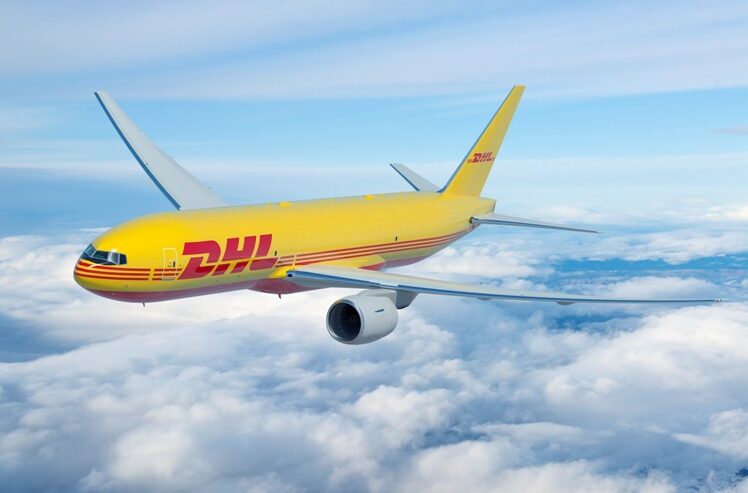DHL report reviews an air cargo sector in flux
31 / 10 / 2022

DHL B777. Source: DHL Express
DHL Global Forwarding’s latest Airfreight State of the Industry report, covering this past month (October) has illuminated the vagaries of what is currently a very unstable air cargo market.
The report found airfreight volumes as a whole remain somewhat suppressed, with demand continuing to remain low on most trade lanes, although transatlantic volumes are comparatively strong.
In fact, global demand has softened since April this year and this year’s peak season is expected to see less of a surge than last year.
Reduced purchasing power caused by economic lows will not help the sector, found the report, which uses data from sources including the International Monetary Fund (IMF), the International Air Transport Association (IATA), Seabury, WorldACD, IHS Markit Group and DGF Desk Research.
Lower sales and high inventory levels caused by reduced export orders will also not offer the industry any succour, nor will high inflation rates around the world that are causing uncertainty now and are likely to remain in force into 2023.
The ongoing war in Ukraine is of course having an impact on the airfreight sector, both in terms of cargo movements and capacity.
The report also pointed to a trend of air shipments being converted into ocean freight, with shippers likely to shift away from air cargo as ocean-going vessel schedule reliability continues to improve.
Overall airfreight capacity was up by 18% in October compared to the same month of 2021, with month-on-month increases continuing (although global airfreight capacity in October was down 5% compared to the same month of 2019).
The report described the greater capacity being made available as “encouraging”, but also pointed out that high jet fuel prices remain a challenge, with there having been only small signs of late of fuel prices softening.
With increasing capacity but sluggish demand for airfreight, it is no surprise that the cargo load factor is falling. Indeed, the industry-wide cargo load factor fell by 8% year-on-year in August.
Freight rates are suffering on most lanes, meanwhile. In August this year, average global rates were 6% higher than in the same month of 2021, but month-on-month declines are continuing.
DHL expects to see an aggressive spot market in operation, with fuel surcharges also likely to fluctuate as jet fuel prices rise.
For the rest of this year and into 2023, DHL is predicting further Covid outbreaks potentially impacting air cargo operations, with the sector also hit by airport backlogs caused by staff shortages.
Improving passenger service demand will create greater bellyhold cargo capacity, but demand for that capacity is likely to remain subdued, not least because of high inflation, soaring energy prices and low GDP growth around the world.
Blip on the screen of DHL’s Logistics Trend Radar
Meanwhile, DHL has also revealed the sixth edition of its Logistics Trend Radar market analysis. Logistics Trend Radar is produced every two years.
In the latest report, the express services giant brought together 40 trends that it says will shape the future of the global logistics community. Of these, it pointed to decarbonisation, robotics, Big Data, supply chain diversification and alternative energy sources as likely to have the biggest impact on transforming logistics.
“The events [of] the last two years have shown us the importance of having robust supply chains and logistics,” advised Katja Busch, chief commercial officer for DHL and head of DHL Customer Solutions and Innovation.
“We are therefore seeing businesses transform logistics from a quiet, back-end operation to a strategic asset and value driver.”
“The DHL Logistics Trend Radar is used like the North Star to navigate the future by our customers, partners, and colleagues and has now been in existence for nearly 10 years,” added Klaus Dohrmann, vice president head of innovation Europe at DHL Customer Solutions and Innovation.
“In this year’s edition, we introduced new trends that became more relevant to the logistics industry like Computer Vision, Interactive AI, Smart Labels and DEIB (Diversity, Equity, Inclusion & Belonging).
“Sustainability is definitely still a top-of-mind topic for our customers today but ensuring resilience in the supply chain is taking center stage in the transformation of logistics,” Dohrmann continued.
“The supply chain status quo narrative of efficiency and operational excellence is now being complemented by an understanding that the supply chain is an essential driver of tangible value creation,” he concluded.
ACIA Aero Leasing partners with DHL on freighter conversions
DHL acquires majority stake in Dutch e-commerce specialist Monta













